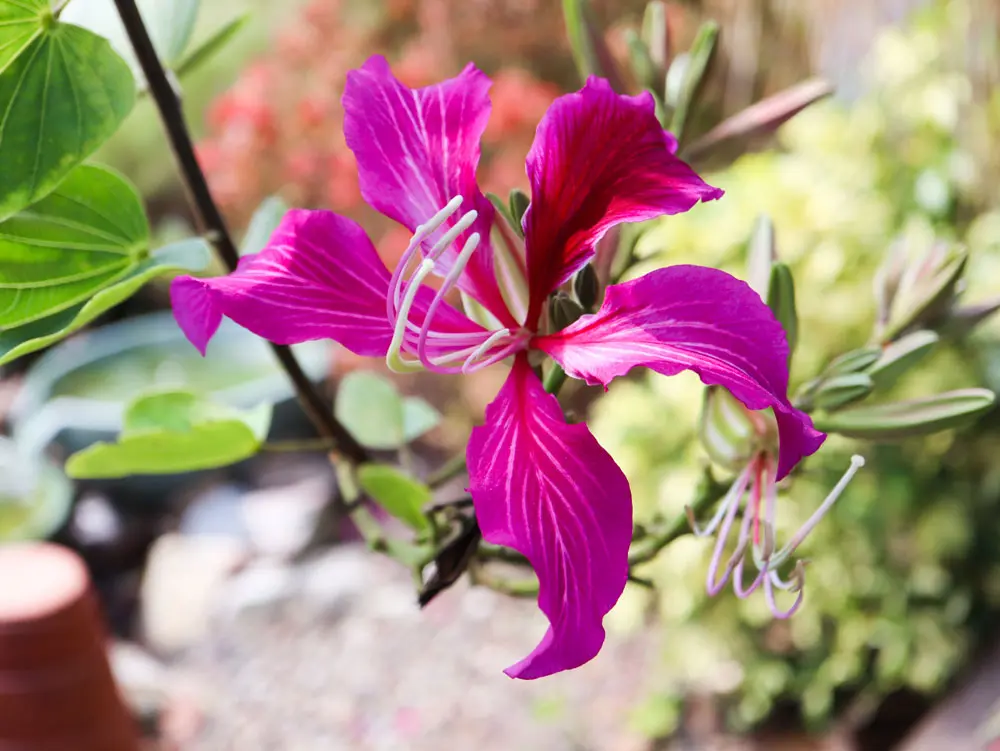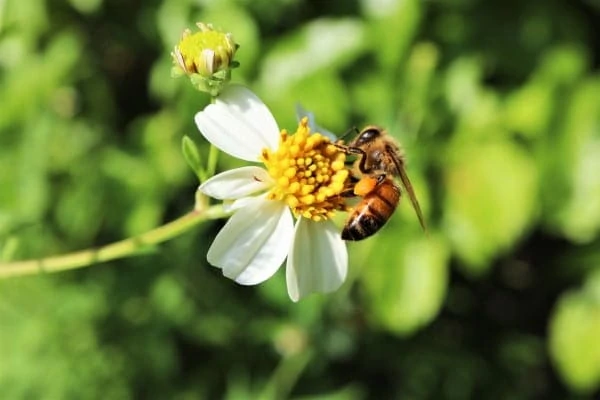by Amanda Rose Newton
Even non-plant people notice flowers, which is exactly what they want you to do.

Flowers come in bright candy-colored packages for the sole reason of attracting the attention of flower-visiting bees, insects, birds, and mammals for fertilization, which is essential to how plants work.
Continuing in our month-long series unlocking the secret lives of plants, flowers are the crowning achievement of successful development.
Stamens + Pistils
At the end of the day, a flower exists to house the female and/or male parts of the plant that are needed in order to produce fertile offspring to carry on the legacy.

Stamens, crowned with anthers, are the male portions of the plant and contain the sperm in the form of pollen.
Often, pollen is airborne in order to hopefully contact a nearby stigma, also present on the flower, which will eventually make its way down the pistil (the female part of the flower) to the ovaries below. Within the ovary lie the eggs which will hopefully be fertilized and become the future seeds of the plant.
Perfect Flowers
There IS such a thing as the perfect flower, and botanically speaking it is a flower with both complete male and female parts.
Some flowers, like papayas and dogwoods, have male and female parts on separate flowers (and even separate trees entirely) and are thus, imperfect. In addition to having 2 genders represented, a flower must also have petals and sepals to complete the package.
While on the subject of sepals, these are typically the green part that protects the flower bud prior to opening. However, not all flowers follow the crowd and some choose to be different by adding colorful sepals to the package.

The red portion of poinsettias or the white parts that resemble petals on dogwoods are both actually sepals! The flowers are less pronounced in the center of the inflorescence. These are just a few of the variations on design that flowers choose to accentuate their exterior wardrobe with.
Flowers Gone Rogue
A single flower makes a single fruit in most cases. The sunflower, for instance, is actually composed of many flowers because the seeds are individual fruits called achenes. Once again, we are tricked into thinking the yellow “petals” are the flowers themselves.
Flowers have several similar tricks up their sleeves and often use coloration and even patterns to fool pollinators into moving pollen to stigmas for them.
Bees are well known to see UV light patterns and as a result, many flowers display “guidelines” leading them straight to the nectar source, inevitably having them fertilize along the way. Clever!

Several species of orchids have even gone as far as resembling female wasps or native bees and when unsuspecting males try to mate with this attractive target, they are left frustrated and the plant is in turn happily pollinated.
On the less extreme end, many of the floral fragrance and color patterns we find attractive also happen to be attractive to dozens of species of insects, birds, and even mammals like bats, making them easy to visit and hence pollinate.
Perhaps the greatest gift flowers give us other than providing us with beauty is that they all give rise to fruit, which provides nourishment to a wide variety of species.
Of course, at this point we know flowers operate under ulterior motives, and by offering a tasty package, seeds are distributed far and wide making plants the original executors of the “long con”.
Well done, plants! You certainly have us all under your spell!


